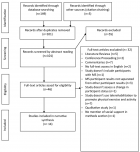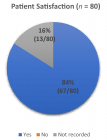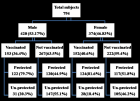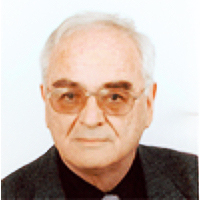Abstract
Review Article
Determining the use and value of social support in Telerehabiliation Interventions for individuals with Multiple Sclerosis: A narrative synthesis review
Lucinda Pidgeon, Trudy Pelton* and Andrew Soundy
Published: 03 October, 2017 | Volume 1 - Issue 3 | Pages: 120-136
Background: Telerehabilitation has been identified as an effective treatment that promotes exercise rehabilitation in individuals with multiple sclerosis (MS). Social support is recognised as a core element of such interventions. However further research is needed to consider the role and value of different social support domains.
Aim: Review available literature to assess and synthesise the use and value of social support within telerehabilitation interventions for individuals with MS.
Method: A narrative synthesis was conducted. A systematic search of included articles was conducted. Electronic databases were searched from inception to January 2017. Other search methods were undertaken. Evaluation and synthesis of included articles utilised risk of bias assessment and a 4-stage synthesis process.
Main Results: A total of fourteen studies, involving 718 participants (505 female, 213 male; aggregated mean age 47.6 years) with MS, were included. Esteem support was the most frequently reported method of social support, followed by informational, emotional and tangible. It would appear social support can be beneficial in assisting participants to adhere to treatment interventions. Visual feedback may be directly beneficial to improve impaired balance in individuals with MS. A model for future interventions is provided.
Conclusions: Social support appears to increase the adherence of participants with MS to telerehabilitation interventions. Unique findings provide an indication for the direction and content of future interventions. Further research is necessary to ascertain the optimal types and frequencies of social support delivery and its effect on health outcomes for participants with MS.
Read Full Article HTML DOI: 10.29328/journal.jnpr.1001014 Cite this Article Read Full Article PDF
Keywords:
Telerehabilitation; Tele rehabilitation; Telemedicine; E-health; MS; Multiple sclerosis; Physiotherapy; Physical therapy; Rehabilitation
References
- Kister I, Bacon TE, Chamot E, Salter AR, Cutter GR, et al. Natural History of Multiple Sclerosis Symptoms. Int J MS Care. 2013; 15: 146-158. Ref.: https://goo.gl/ApY1ZC
- Motl RW, McAuley E, Snook EM. Physical activity and multiple sclerosis: a meta-analysis. Mult Scler. 2005; 11: 459-463. Ref.: https://goo.gl/snMzdV
- Mostert S, Kesselring J. Effects of a short-term exercise training program on aerobic fitness, fatigue, health perception and activity level of subjects with multiple sclerosis. Mult Scler. 2002; 8: 161-168. Ref.: https://goo.gl/5DLo6K
- Remington G, Rodriguez Y, Logan D, Williamson C, Treadaway K. Facilitating medication adherence in patients with multiple sclerosis. Int J MS Care. 2013; 15: 36-45. Ref.: https://goo.gl/12C1n8
- Klauer T, Zettl UK. Compliance, adherence, and the treatment of multiple sclerosis. J Neurol. 2008; 255: 87-92. Ref.: https://goo.gl/AfuP4F
- Rietberg MB, Brooks D, Uitdehaag BMJ, Kwakkel G. Exercise therapy for multiple sclerosis. Cochrane Database Syst Rev. 2005; Ref.: https://goo.gl/oWZpiR
- Khan F, Turner-Stokes L, Ng L, Kilpatrick T, Amatya B. Multidisciplinary rehabilitation for adults with multiple sclerosis. Cochrane Database Syst Rev. 2007; 2: Ref.: https://goo.gl/728cr7
- Campbell E, Coulter EH, Mattison PG, Miller L, McFadyen A, et al. Physiotherapy rehabilitation for people with progressive multiple sclerosis: a systematic review. Arch Phys Med Rehabil. 2016; 97: 141-151. Ref.: https://goo.gl/UgM5vs
- Khan F, Amatya B, Kesselring J, Galea M. Telerehabilitation for persons with multiple sclerosis. Cochrane Database Syst Rev. 2015; 4: Ref.: https://goo.gl/Ua7suS
- Brennan DM, Mawson S, Brownsell S. Telerehabilitation: enabling the remote delivery of healthcare, rehabilitation, and selfmanagement. Stud Health Technol Inform. 2009; 145: 231-248. Ref.: https://goo.gl/G3iQcA
- Laver KE, Schoene D, Crotty M, George S, Lannin NA, et al. Telerehabilitation services for stroke. Cochrane Database Syst Rev. 2014; 12: Ref.: https://goo.gl/beYiHf
- Prosperini L, Leonardi L, De Carli P, Mannocchi ML, Pozzilli C. Visuo-proprioceptive training reduces risk of falls in patients with multiple sclerosis. Mult Scler. 2010; 16: 491-499. Ref.:
https://goo.gl/6acn5D - Rees T, Hardy L. An Investigation of the social support experiences of high-level sports performers. The Sport Psychologist. 2000; 14: 327-347. Ref.: https://goo.gl/unFYcc
- Rees T, Smith B, Sparkes AC. The influence of social support on the lived experiences of spinal cord injured sportsmen. The Sport Psychologist. 2003; 17: 135-156. Ref.: https://goo.gl/uSPoHZ
- McAuley E, Motl RW, Morris KS, Hu L, Doerksen SE, et al. Enhancing physical activity adherence and well-being in multiple sclerosis: a randomised controlled trial. Mult Scler. 2007; 13: 652-659. Ref.: https://goo.gl/UbrLUT
- Ashford S, Edmunds J, French DP. What is the best way to change self‐efficacy to promote lifestyle and recreational physical activity? A systematic review with meta‐analysis. Br J Health Psychol. 2010; 15: 265-288. Ref.: https://goo.gl/MpxAMX
- Skår ABR, Folkestad H, Smedal T, Grytten N. “I refer to them as my colleagues”: the experience of mutual recognition of self, identity and empowerment in multiple sclerosis. Disabil Rehabil. 2014; 36: 672-677. Ref.: https://goo.gl/xLu5Zu
- Fakolade A, Finlayson M, Plow M. Using telerehabilitation to support people with multiple sclerosis: A qualitative analysis of interactions, processes, and issues across three interventions. British Journal of Occupational Therapy. 2017; 80: 259-268. Ref.: https://goo.gl/FvVALN
- Ennis M, Thain J, Boggild M, Baker GA, Young CA. A randomized controlled trial of a health promotion education programme for people with multiple sclerosis. Clin Rehabil. 2006; 20: 783-793. Ref.: https://goo.gl/3ZxfKU
- Malcomson KS, Lowe-Strong AS, Dunwoody L. What can we learn from the personal insights of individuals living and coping with multiple sclerosis? Disabil Rehabil. 2008; 30: 662-674. Ref.: https://goo.gl/Rt2VTN
- Methley AM, Chew‐Graham C, Campbell S, Cheraghi‐Sohi S. Experiences of UK health‐care services for people with Multiple Sclerosis: a systematic narrative review. Health Expect. 2015; 18: 1844-1855. Ref.: https://goo.gl/PBHKXx
- Motl RW, Snook EM, McAuley E, Scott JA, Douglass ML. Correlates of Physical Activity among Individuals with Multiple Sclerosis. Ann Behav Med. 2006; 32: 154-161. Ref.: https://goo.gl/FCreEs
- Motl RW, Snook EM. Physical activity, self-efficacy, and quality of life in multiple sclerosis. Ann Behav Med. 2008; 35: 111. Ref.: https://goo.gl/qZjFVs
- Rose A, Rosewilliam S, Soundy A. Shared decision making within goal setting in rehabilitation settings: A systematic review. Patient Educ Couns. 2017; 100: 65-75. Ref.: https://goo.gl/QYoJmn
- Soundy A, Roskell C, Adams R, Elder T, Dawes H. Understanding health care professional interactions in multiple sclerosis: A systematic review and thematic synthesis, OJTR. 2016; 4: 187-217. Ref.: https://goo.gl/PXY5tK
- Rieckmann P, Boyko A, Centonze D, Elovaara I, Giovannoni G, et al. Achieving patient engagement in multiple sclerosis: A perspective from multiple sclerosis in the 21st century steering group. Multiple Sclerosis and Related Disorders, 2015; 4: 202-218. Ref.: https://goo.gl/DFPbD7
- Gross J, Vancampfort D, Stubbs B, Gorczynski P, Soundy A. A narrative synthesis investigating the use and value of social support to promote physical activity among individuals with schizophrenia. Disabil Rehabil. 2016; 38: 123-150. Ref.: https://goo.gl/qKWsny
- Soundy A, Roskell C, Elder T, Collette J, Dawes H. The psychological processes of adaptation and hope in patients with multiple sclerosis: A thematic synthesis. OJTR. 2016; 4: 22-47. Ref.: https://goo.gl/cWZWUd
- Rodgers M, Sowden A, Petticrew M, Arai L, Roberts H, Britten N, al e. Testing methodological guidance on the conduct of narrative synthesis in systematic reviews. Evaluation 2009; 15: 49-74.
- Cooke, A., Smith, D., Booth, A. (2012). Beyond PICO: the SPIDER tool for qualitative evidence synthesis. Qualitative Health Research, 22: 1435-1443.
- Yu CH, Mathiowetz V. Systematic review of occupational therapy-related interventions for people with multiple sclerosis: Part 1. Activity and participation. Am J Occup Ther. 2014; 68: 27-32. Ref.: https://goo.gl/Wv8gDc
- Donzé C. Update on rehabilitation in multiple sclerosis. Presse Médicale, 2015; 44: 169-176. Ref.: https://goo.gl/Qobwys
- Brichetto G, Spallarossa P, de Carvalho MLL, Battaglia MA. The effect of Nintendo® Wii® on balance in people with multiple sclerosis: a pilot randomized control study. Mult Scler. 2013; 19: 1219-1221. Ref.: https://goo.gl/oDYVW8
- Finkelstein J, Lapshin O, Castro H, Cha E, Provance PG. Home-based physical telerehabilitation in patients with multiple sclerosis: a pilot study. J Rehabil Res Dev. 2008; 45: 1361-1374. Ref.: https://goo.gl/Gh2aZg
- Nilsagård YE, Forsberg AS, von Koch L. Balance exercise for persons with multiple sclerosis using Wii games: a randomised, controlled multi-centre study. Mult Scler. 2013; 19: 209-216. Ref.: https://goo.gl/yjtpY4
- Ortiz-Gutiérrez R, Galán del Río F, Cano de la Cuerda R, Diego A, Isabel M, et al. A telerehabilitation program by virtual reality-video games improved balance and postural control in multiple sclerosis patients. NeuroRehabilitation. 2013; 33: 545-554. Ref.: https://goo.gl/vHSbME
- Motl RW, Dlugonski D, Wójcicki TR, McAuley E, Mohr DC. Internet intervention for increasing physical activity in persons with multiple sclerosis. Mult Scler. 2011; 17: 116-128. Ref.: https://goo.gl/ZfEA5P
- Huijgen BC, Vollenbroek-Hutten MM, Zampolini M, Opisso E, Bernabeu M, et al. Feasibility of a home-based telerehabilitation system compared to usual care: arm/hand function in patients with stroke, traumatic brain injury and multiple sclerosis. J Telemed Telecare. 2008; 14: 249-256. Ref.: https://goo.gl/4tjF68
- Mercier HW, Ni P, Houlihan BV, Jette AM. Differential Impact and Use of a Telehealth Intervention by Persons with MS or SCI. Am J Phys Med Rehabil. 2015; 94: 987-999. Ref.: https://goo.gl/vk9aVL
- Plow M, Finlayson M. Potential benefits of Nintendo Wii Fit among people with multiple sclerosis: a longitudinal pilot study. Int J MS Care. 2011; 13: 21-30. Ref.: https://goo.gl/jxfrmw
- Turner AP, Hartoonian N, Sloan AP, Benich M, Kivlahan DR, et al. Improving fatigue and depression in individuals with multiple sclerosis using telephone-administered physical activity counseling. J Consult Clin Psychol. 2016; 84: 297-309. Ref.: https://goo.gl/pL5b22
- Saposnik G, Mamdani M, Bayley M, Thorpe KE, Hall J, et al. Effectiveness of Virtual Reality Exercises in STroke Rehabilitation (EVREST): rationale, design, and protocol of a pilot randomized clinical trial assessing the Wii gaming system. Int J Stroke. 2010; 5: 47-51. Ref.: https://goo.gl/23efWm
- Gulick EE. Social support among persons with multiple sclerosis. Research in Nursing & Health. 1994; 17: 195-206. Ref.: https://goo.gl/DdmuiB
- Hwang JE, Cvitanovich DC, Doroski EK, Vajarakitipongse JG. Correlations between quality of life and adaptation factors among people with multiple sclerosis. Am J Occup Ther. 2011; 65: 661-669. Ref.: https://goo.gl/rdNfiw
- Campbell D, Stanley JC. Experimental and quasi-experimental designs for research, Chicago: Rand McNally College Publishing. 1963.
- Rodgers M, Sowden A, Petticrew M, Arai L, Roberts H, et al. Testing methodological guidance on the conduct of narrative synthesis in systematic reviews: effectiveness of interventions to promote smoke alarm ownership and function. Evaluation. 2009; 15: 49-73. Ref.: https://goo.gl/DJdZ8b
- Mackenzie IS, Morant SV, Bloomfield GA, MacDonald TM, O’riordan J. Incidence and prevalence of multiple sclerosis in the UK 1990–2010: a descriptive study in the General Practice Research Database. J Neurol Neurosurg Psychiatry. 2014; 85: 76-84. Ref.: https://goo.gl/JA4FB9
- Langer-Gould A, Brara SM, Beaber BE, Zhang JL. Incidence of multiple sclerosis in multiple racial and ethnic groups. Neurology. 2013; 80: 1734-1739. Ref.: https://goo.gl/Jh3pCk
- Marrie RA, Cohen J, Stuve O, Trojano M, Sørensen PS, et al. A Systematic review of the incidence and prevalence of comorbidity in multiple sclerosis: Overview. Mult Scler. 2015; 21: 263-281. Ref.: https://goo.gl/yh8y8E
- Edwards J, Kaimal G. Using meta-synthesis to support application of qualitative methods findings in practice: A discussion of meta-ethnography, narrative synthesis, and critical interpretive synthesis. The Arts in Psychotherapy, 2016; 51: 30-35. Ref.: https://goo.gl/AEwXDM
- Bombardier CH, Cunniffe M, Wadhwani R, Gibbons LE, Blake KD, et al. The efficacy of telephone counseling for health promotion in people with multiple sclerosis: a randomized controlled trial. Arch Phys Med Rehabil. 2008; 89: 1849-1856. Ref.: https://goo.gl/1jx63V
- Dlugonski D, Motl RW, Mohr DC, Sandroff BM. Internet-delivered behavioral intervention to increase physical activity in persons with multiple sclerosis: sustainability and secondary outcomes. Psychol Health Med. 2012; 17: 636-651. Ref.: https://goo.gl/nh7X99
- Pilutti LA, Dlugonski D, Sandroff BM, Klaren R, Motl RW. Randomized controlled trial of a behavioral intervention targeting symptoms and physical activity in multiple sclerosis. Mult Scler. 2014; 20: 594-601. Ref.: https://goo.gl/jZX5Yd
- Moher D, Liberati A, Tetzlaff J, Altman DG. Preferred Reporting Items for Systematic Reviews and Meta- Analyses: The PRISMA Statement. PLoS Med. 2009; 6: e1000097. Ref.: https://goo.gl/b8q97y
- Coulter A. Patient engagement--What works? J Ambul Care Manage. 2012; 35: 80-89. Ref.: https://goo.gl/KirR6X
- Levack WMM, Weatherall M, Hay-Smith EJC, Dean SG, McPherson K, et al. Goal setting strategies to enhance goal pursuit in adult rehabilitation: summary of a cochrane systematic review and meta-anlaysis. Eur J Phys Rehabil Med. 2016; 52: 400-416. Ref.: https://goo.gl/yA4TJx
- Multiple Sclerosis Society UK. MS in the UK. Obtained from the World Wide Web 13/06/2017. 2016; 1-3. Ref.: https://goo.gl/D2rX97
- Soundy A, Elder T. Developing and applying the theory of psychological adapation needs in patients with multiple sclerosis. In R. R. Watson & Killgore, W. D. S. Nutrition and lifestyle in neurological autoimmune diseases: multiple sclerosis. Academic Press. 2017.
- Stennett A, De Souza L, Norris M. Physical activity and exercise priorities in community dwelling people with multiple sclerosis: A delphi study. Disabil Rehabil. 2017; 1-8. Ref.: https://goo.gl/UpFfeQ
- Six PA. Mechanisms linking social ties and support to physical and mental health. J Health Soc Behav. 2011; 52: 145-161. Ref.: https://goo.gl/3UBeU9
Figures:

Figure 1

Figure 2
Similar Articles
-
Achilles Tendon Injuries: Comparison of Different Conservative and Surgical Treatment and RehabilitationAlessandro Bistolfi,Jessica Zanovello, Elisa Lioce,Lorenzo Morino,Raul Cerlon,Alessandro Aprato*,Giuseppe Massazza. Achilles Tendon Injuries: Comparison of Different Conservative and Surgical Treatment and Rehabilitation. . 2017 doi: 10.29328/journal.jnpr.1001006; 1: 039-053
-
How does a Personalized Rehabilitative Model influence the Functional Response of Different Ankle Foot Orthoses in a Cohort of Patients Affected by Neurological Gait Pattern?Maurizio Falso*, Eleonora Cattaneo,Elisa Foglia,Marco Zucchini,Franco Zucchini. How does a Personalized Rehabilitative Model influence the Functional Response of Different Ankle Foot Orthoses in a Cohort of Patients Affected by Neurological Gait Pattern?. . 2017 doi: 10.29328/journal.jnpr.1001010; 1: 072-092
-
First Metatarsal Stress Fracture of a pre-adolescent female Irish dancer with Medial Plantar Foot Pain: A Case ReportDale Gerke,Jean-Michel Brismée*. First Metatarsal Stress Fracture of a pre-adolescent female Irish dancer with Medial Plantar Foot Pain: A Case Report. . 2017 doi: 10.29328/journal.jnpr.1001009; 1: 067-071
-
Determining the use and value of social support in Telerehabiliation Interventions for individuals with Multiple Sclerosis: A narrative synthesis reviewLucinda Pidgeon,Trudy Pelton*,Andrew Soundy. Determining the use and value of social support in Telerehabiliation Interventions for individuals with Multiple Sclerosis: A narrative synthesis review. . 2017 doi: 10.29328/journal.jnpr.1001014; 1: 120-136
-
Rehabilitation of proximal humerus fractures: An environmental scan of Canadian physiotherapy practice patternsLowell L Kwan,Norma J MacIntyre*. Rehabilitation of proximal humerus fractures: An environmental scan of Canadian physiotherapy practice patterns. . 2017 doi: 10.29328/journal.jnpr.1001013; 1: 104-119
-
Frequency specific microcurrent resolves chronic pain and adhesions after ulnar transposition surgeryJodie Adams*,Carolyn McMakin. Frequency specific microcurrent resolves chronic pain and adhesions after ulnar transposition surgery. . 2017 doi: 10.29328/journal.jnpr.1001012; 1: 099-103
-
The efficacy of complex Decongestive Physiotherapy in patients with Bilateral Primary Lower Extremity Lymphedema and Untreatable multiple health conditions: A Case ReportHümeyra Kiloatar PT*. The efficacy of complex Decongestive Physiotherapy in patients with Bilateral Primary Lower Extremity Lymphedema and Untreatable multiple health conditions: A Case Report. . 2017 doi: 10.29328/journal.jnpr.1001011; 1: 093-098
-
Physical Therapy for Transverse Myelitis: A Case ReportAllison Buchanan,Kelli J Wilkerson,Han-Hung Huang*. Physical Therapy for Transverse Myelitis: A Case Report. . 2018 doi: 10.29328/journal.jnpr.1001017; 2: 015-021
-
Perceptive and Rehabilitative Muscle Recruitment Facilitation Secondary to the use of a Dynamic and Asymmetric Spine Brace in the treatment of Adolescent Idiopathic Scoliosis (AIS)Maurizio Falso*, Laura Forti,Silvia Iezzi,Gloria Cottali,Eleonora Cattaneo,Marco Zucchini,Franco Zucchini. Perceptive and Rehabilitative Muscle Recruitment Facilitation Secondary to the use of a Dynamic and Asymmetric Spine Brace in the treatment of Adolescent Idiopathic Scoliosis (AIS). . 2018 doi: 10.29328/journal.jnpr.1001021; 2: 054-079
-
Influence of an integrated rehabilitative treatment on the modification of body representation in patients affected by Unilateral Spatial NeglectMaurizio Falso*,Michela Delpero,Eleonora Cattaneo. Influence of an integrated rehabilitative treatment on the modification of body representation in patients affected by Unilateral Spatial Neglect. . 2018 doi: 10.29328/journal.jnpr.1001023; 2: 087-100
Recently Viewed
-
Cystoid Macular Oedema Secondary to Bimatoprost in a Patient with Primary Open Angle GlaucomaKonstantinos Kyratzoglou*,Katie Morton. Cystoid Macular Oedema Secondary to Bimatoprost in a Patient with Primary Open Angle Glaucoma. Int J Clin Exp Ophthalmol. 2025: doi: 10.29328/journal.ijceo.1001059; 9: 001-003
-
Sex after Neurosurgery–Limitations, Recommendations, and the Impact on Patient’s Well-beingMor Levi Rivka*, Csaba L Dégi. Sex after Neurosurgery–Limitations, Recommendations, and the Impact on Patient’s Well-being. J Neurosci Neurol Disord. 2024: doi: 10.29328/journal.jnnd.1001099; 8: 064-068
-
Physiotherapy Undergraduate Students’ Perception About Clinical Education; A Qualitative StudyPravakar Timalsina*,Bimika Khadgi. Physiotherapy Undergraduate Students’ Perception About Clinical Education; A Qualitative Study. J Nov Physiother Rehabil. 2024: doi: 10.29328/journal.jnpr.1001063; 8: 043-052
-
Clinical Significance of Anterograde Angiography for Preoperative Evaluation in Patients with Varicose VeinsYi Liu,Dong Liu#,Junchen Li#,Tianqing Yao,Yincheng Ran,Ke Tian,Haonan Zhou,Lei Zhou,Zhumin Cao*,Kai Deng*. Clinical Significance of Anterograde Angiography for Preoperative Evaluation in Patients with Varicose Veins. J Radiol Oncol. 2025: doi: 10.29328/journal.jro.1001073; 9: 001-006
-
Regional Anesthesia Challenges in a Pregnant Patient with VACTERL Association: A Case ReportUzma Khanam*,Abid,Bhagyashri V Kumbar. Regional Anesthesia Challenges in a Pregnant Patient with VACTERL Association: A Case Report. Int J Clin Anesth Res. 2025: doi: 10.29328/journal.ijcar.1001027; 9: 010-012
Most Viewed
-
Evaluation of Biostimulants Based on Recovered Protein Hydrolysates from Animal By-products as Plant Growth EnhancersH Pérez-Aguilar*, M Lacruz-Asaro, F Arán-Ais. Evaluation of Biostimulants Based on Recovered Protein Hydrolysates from Animal By-products as Plant Growth Enhancers. J Plant Sci Phytopathol. 2023 doi: 10.29328/journal.jpsp.1001104; 7: 042-047
-
Sinonasal Myxoma Extending into the Orbit in a 4-Year Old: A Case PresentationJulian A Purrinos*, Ramzi Younis. Sinonasal Myxoma Extending into the Orbit in a 4-Year Old: A Case Presentation. Arch Case Rep. 2024 doi: 10.29328/journal.acr.1001099; 8: 075-077
-
Feasibility study of magnetic sensing for detecting single-neuron action potentialsDenis Tonini,Kai Wu,Renata Saha,Jian-Ping Wang*. Feasibility study of magnetic sensing for detecting single-neuron action potentials. Ann Biomed Sci Eng. 2022 doi: 10.29328/journal.abse.1001018; 6: 019-029
-
Pediatric Dysgerminoma: Unveiling a Rare Ovarian TumorFaten Limaiem*, Khalil Saffar, Ahmed Halouani. Pediatric Dysgerminoma: Unveiling a Rare Ovarian Tumor. Arch Case Rep. 2024 doi: 10.29328/journal.acr.1001087; 8: 010-013
-
Physical activity can change the physiological and psychological circumstances during COVID-19 pandemic: A narrative reviewKhashayar Maroufi*. Physical activity can change the physiological and psychological circumstances during COVID-19 pandemic: A narrative review. J Sports Med Ther. 2021 doi: 10.29328/journal.jsmt.1001051; 6: 001-007

HSPI: We're glad you're here. Please click "create a new Query" if you are a new visitor to our website and need further information from us.
If you are already a member of our network and need to keep track of any developments regarding a question you have already submitted, click "take me to my Query."

















































































































































